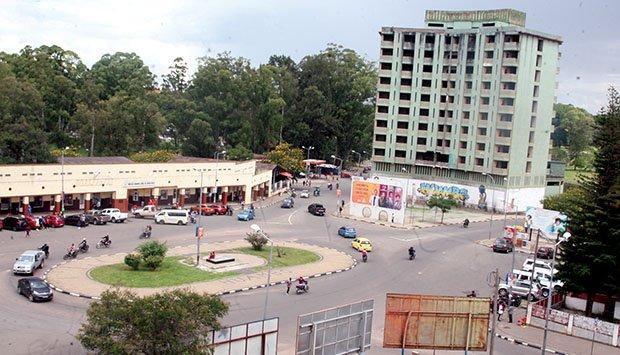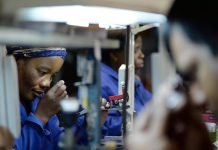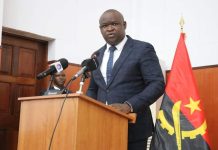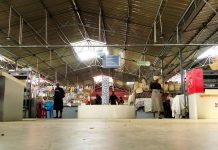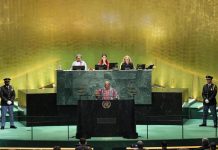Africa-Press – Angola. The city of Huambo completed 110 years since its foundation and elevation to this category, on August 8, 1912, through ordinance 10.40, signed by the then Portuguese general and politician José Maria Mendes Ribeiro Norton de Matos.
This city has two important moments, which history cannot fail to record, that of its foundation, on the 8th of August, 1912 and the other marked by the date of its inauguration on the 21st of September of the same year, that is, 43 days after its foundation.
The historian Venceslau Casese said that the city that until independence was called Nova Lisboa, its inauguration coincided with the completion of the first journey of the train of the Caminhos-de-Ferro de Benguela (CFB), which brought General Norton de Matos, fact that marked the opening and inauguration of the railway line that connects the port city of Lobito to the east of the country.
The political and cultural act of the foundation took place in the square next to the Pica-Pau building, where the goals of the city’s development in demographic and urban terms of the future capital of the Central Plateau were outlined.
In 1909 Norton de Matos replaces Cabral de Moncada in the position of governor-general of the overseas province of Angola, as soon as he got to know the Central Plateau region, the high commissioner abolished the continuation of the construction of wooden houses covered with grass and imposed the construction of permanent houses and masonry, with the aim of designing a new big city, the country’s potential capital.
According to historical sources, the development of the city appears before 1902, with the end of the military invasions in the region of Forte da Quissala, where the only Portuguese military unit was located at the time.
Venceslau Casese explained that the birthplace of the city of Huambo is the Forte da Quissala, in the area where the Quissala market operates, which received the first Portuguese traders, coming from Benguela and later on to the other commercial area now known as Bairro da Rua do Comércio where the main shopping centers of the time appeared, influenced by the railway line that passes nearby.
From Wambu to Nova Lisboa
The current city of Huambo was called Wambu in honor of one of its first inhabitants, the legendary hunter Wambu Kalunga, who came from the region of Seles, Cuanza Sul, who was chasing an elephant and had just shot it near the Cunhoñgamua River, near das Pedras Ganda La Kawe, in the municipality of Caála, where he had just set up his camp to dry the meat and finally, because he liked the region so much, he went to pick up his family in the land of origin, to live in the new land now discovered.
According to the historian, in 1928 the city’s designer, engineer Vicente Ferreira and then governor-general of the province of Angola, gave the city the name Nova Lisboa, with the aim of making it the capital of Angola. , as well as all overseas provinces, taking into account its architecture and the climate of the region that resembles the capital of the metropolis Lisbon.
With this title, the adobe and wattle-and-daub houses covered with grass in the new town gave way to new houses of definitive construction and buildings for administrative and religious bodies, and the life of the new city was progressing.
According to the historian, Wambu is one of the few places in the country that was born to be a city, so its creation was designed to be the capital of the Central Plateau region.
But its growth came quickly in the last years of the sixties with the emergence of a strong industrial park and the intensification of diversified economic activity.
Engineer Vicente Ferreira finished the sketch of the city in 1911, according to Norton de Matos’ guidelines, and prepared plots of land and indicated the spaces for civil, military, religious, funerary and many other architectures and defined all the streets.
In the upper part of the city, the first permanent buildings built, stand out the current Constantino Kamoli library, which functioned as the town hall, the current medical center of the national police, as the first residence of the priests, next to the civil registry building is first school and the current museum was the gateway for telecommunications services.
The foundation of Huambo is preceded by the emergence of the first Catholic missions, highlighting the mission of Cuando founded in 1910 by Monsignor Luís Alfredo Keilling, which before being built in the current space, operated in the city center next to the Constantino Kamoli municipal library.
Before, the missionary had the intention of building the mission near the area where Norton de Matos had planned the passage of the Benguela Railways and therefore, Monsignor Keilling, in 1911, chose another location near the Cuando River, 18 kilometers from where it still operates today. .
The parish of Sé Catedral do Huambo only appears 20 years after the foundation of the city of Huambo, that is, in 1932, a place chosen by Monsignor Luís Alfredo Keilling, plot number 284, space provided by the governor-general Lopes Mateus, built by the engineer Marques Trindade, which was sponsored by Banco de Angola and other benefactors.
For More News And Analysis About Angola Follow Africa-Press

